Sutton Hoo: First finished pieces of Anglo-Saxon ship joined
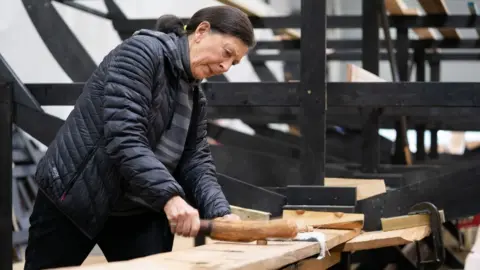 PA Media
PA MediaThe first two finished pieces of a replica of an Anglo-Saxon ship found at Sutton Hoo have been joined together.
The 88ft (27m) reconstruction of the burial ship excavated in 1939 is being built in a shed beside the River Deben in Woodbridge, Suffolk.
The story of its discovery was told in the Netflix film The Dig, starring Carey Mulligan and Ralph Fiennes.
Tim Kirk, who is leading the £1m project, said the building of the replica ship was "one big experiment".
Sutton Hoo is thought to be the final resting place of the 7th-Century King Raedwald.
Treasures unearthed there have been described as one of "greatest archaeological discoveries of all time".
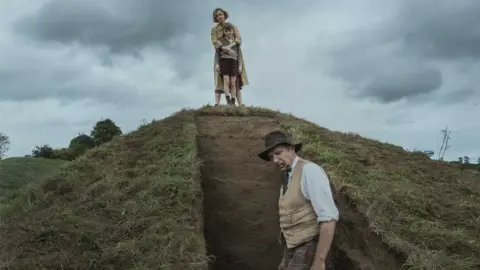 Larry Horricks/Netflix
Larry Horricks/Netflix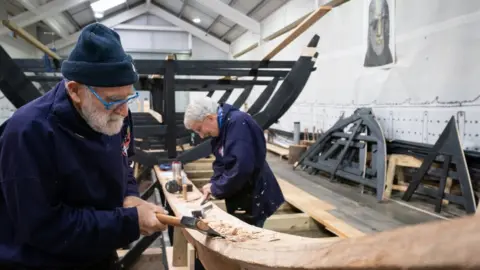 PA Media
PA MediaThe original ship's timber had rotted away in the acidic soil, leaving only an imprint in the sand, but its iron rivets remained.
Mr Kirk said although they had an outline, they did not have information about the ship's interior layout, where the seats were, how high the floor was or how it was controlled.
"Through building this, and it is really just a big experimental archaeology programme, we're hoping to learn how the ship actually sailed," he said.
"We can do computer simulations of this, but to actually find out there's only one way to do it and that's to build it and put it in the water and row it and then perhaps sail it."
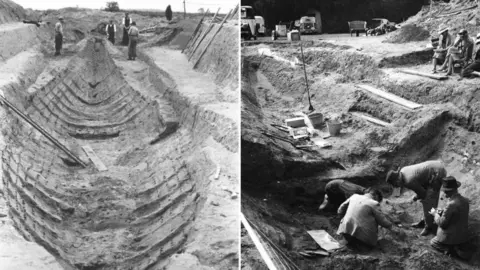 Trustees of the British Museum
Trustees of the British Museum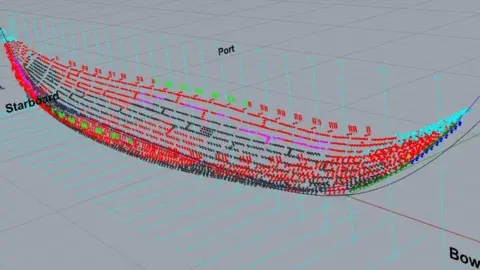 The Sutton Hoo Ship's Company
The Sutton Hoo Ship's CompanyBuilding of the ship, being made of oak donated by Suffolk farmers and secured with iron rivets, was delayed by the coronavirus pandemic.
Archaeologist Angela Care Evans, who worked on a dig at Sutton Hoo in the 1960s, knocked in the first of three wooden pegs.
Mr Kirk said now the first two pieces of the ship were joined "that really is the stage where you can say you're building a ship".
The ship is expected to be completed in 2024.

 National Trust Images/Justin Minns
National Trust Images/Justin MinnsWhat was found at Sutton Hoo?
- The 86ft (27m) oak ship was the tomb of an Anglo-Saxon ruler who was buried around 1,300 years ago along with his possessions, warrior's uniform and equipment for hosting a feast in the afterlife
- The treasures found inside included a warrior's iron helmet, a magnificent sword, Byzantine silverware, gold jewellery, a lavish feasting set and a whalebone casket
- The finds revealed extensive trading links with Scandinavia, the Byzantine Empire (centred on Constantinople - modern-day Istanbul) and Egypt
- They revolutionised historians' understanding of the 7th Century, previously seen as a backward time when England was divided into Anglo-Saxon kingdoms
- The treasures are now at the British Museum, while the site is owned by the National Trust
Source: BBC

Find BBC News: East of England on Facebook, Instagram and Twitter. If you have a story suggestion email [email protected]
